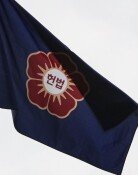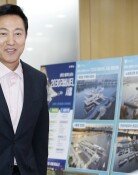U.S. aircraft carrier off to Korean Peninsula
U.S. aircraft carrier off to Korean Peninsula
Posted April. 10, 2017 07:11,
Updated April. 10, 2017 08:20
The Nimitz-class USS supercarrier Carl Vinson group is currently moving towards the western Pacific near the Korean shores. The deployment comes as an urgent issue, as the movement was made right after the U.S. fired 59 Tomahawk cruise missiles on the Syrian air force base on Thursday and U.S. President Donald Trump and Chinese President Xi Jinping failed to come up with coordinated solutions for North Korean nuclear issue after their first summit on Friday. It is believed that the deployment of USS Carl Vinson will serve as a stern warning to Pyongyang and Beijing should North Korea push forward its serious provocations such as the sixth nuclear test. Still, all eyes are on the naval group, as it already was assigned to the recent KORUS joint forces drill last month and made an unexpected detour as it was headed to Australia.
President Trump called South Korean Acting President Hwang Kyo-ahn on Saturday and explained the recent summit that it was "an in-depth discussion on the seriousness and response directions on North Korea and its nuclear issues, and conveyed the U.S. stance on the deployment of THAAD." However, it was found that no details were covered in the summit briefing, and the two nations remained apart on the North Korean nuclear issue. The result indeed was a disappointment to South Korea, which expected President Trump to push China to play an active role in resolving the North Korean nuclear issue by officially announcing a policy on secondary boycott against Chinese firms, and make clear that Beijing does not make retaliatory actions against South Korea due to the deployment of THAAD.
The North will change their stance only when a special countermeasure is taken to see the end of the nuclear provocations made by Pyongyang, just as the two nations agreed on a 100-day plan to strike a balance on the current trade imbalance. While the North Korean nuclear issue was not covered much due to a lot of time spent in discussing ways to reduce the U.S. trade deficits by increasing exports to China, the Trump administration will be left to seek its own ways if China does not cooperate on the matter. In fact, there were even reports that the National Security Council (NSC) completed reviewing its policy on North Korea and reported options including the redeployment of strategic nuclear weapons in South Korea and the assassination of North Korean leader Kim Jong Un. Against this backdrop. U.S. media outlets covered the deployment of USS Carl Vinson on the headlines.
While the stark reality shows that the future of the Korean Peninsula will be decided upon the decisions made by the U.S. and China, we cannot just wait and see how the two superpowers play out. Though South Korea is currently undergoing a regime change, Acting President Hwang and diplomacy experts should strive to find out what the two leaders actually spoke during the summit, and delve into ways to get a glimpse of what topics were covered during the closed-door meeting. There are even possibilities that the two leaders spoke about the future of the Korean Peninsula, let alone the agreement. Above all, close coordination between Washington and Seoul is vital, when the U.S. chooses to operate independently on North Korean issues. In no circumstances should our future and fate be decided while we are blind-folded.
eligius@donga.com
Headline News
- Med professors announce intention to leave hospitals starting Thursday
- Bridge honoring Sgt. Moon Jae-sik unveiled in Pennsylvania
- Chief of Staff Chung tells presidential secretaries to stay away from politics
- US FTC bans noncompete agreements
- N. Korea launches cyberattacks on S. Korea's defense companies







